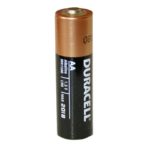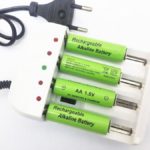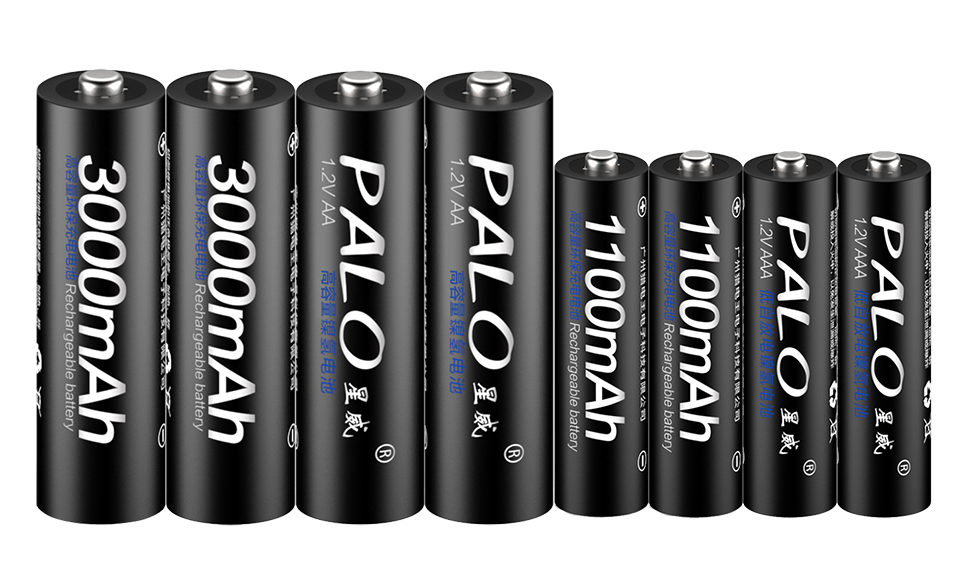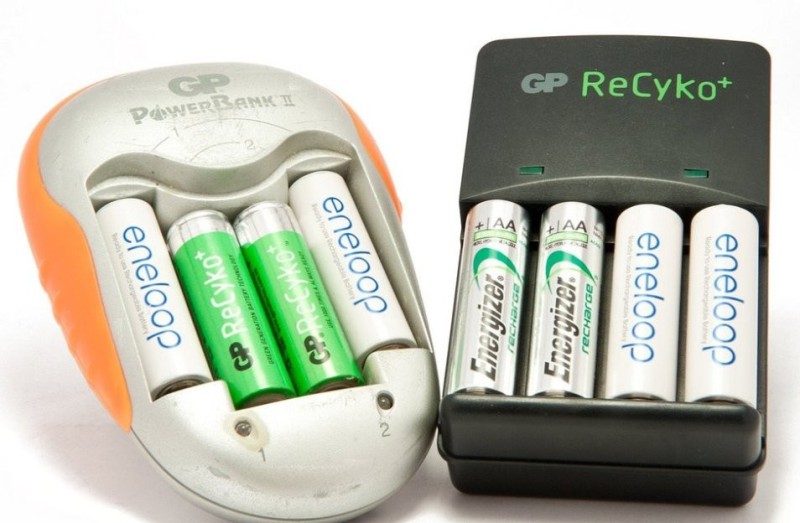Is it possible to charge batteries and what kind?
An interesting thing is progress. Previously, everything worked on steam traction, later the time came for internal combustion engines, but now? Today everyone is trying to switch to electric energy. Even cars, no, no, will have an electric motor. What can we say about various gadgets?
Whatever modern electronic equipment we take, be it an echo sounder or a music player, a radio-controlled toy or a radio player - all this requires a power source for its operation. Of course, many of these devices can be connected to the network, but most of them run on batteries.
If you disassemble this battery, you will find an anode and a cathode inside - these are electrodes, one of which is positively charged and the other negatively charged. They are located inside a container that is filled with electrolyte and all this is in a metal casing.
When the contacts close, electrons begin to “run” from electrode to electrode - from this “running” an electric current appears. After some time, the amount of active substance at the anode will decrease, and the number of electrons will decrease. And the electrolyte begins to conduct electricity worse. This is how the battery runs out.
The content of the article
What kind of batteries are there?
Having a common purpose, batteries differ not only in shape, but also in the chemical reaction, the occurrence of which ensures the occurrence of an electric current inside.
Battery shape
We are all accustomed to “finger” (designated AA) and “little finger” (designated AAA). They are made in the form of a cylinder and are used in most electronic equipment.
Batteries marked C and D, presented in the form of a “barrel,” are slightly larger than the first ones, due to which they have a larger amount of power. As a rule, they are used in flashlights, portable tape recorders and other types of devices.
Rectangular “crown” batteries are no less widespread.
Small disc (CR) batteries are most often used in miniature devices such as watches, toys, etc.
Cylinder-shaped batteries have a voltage of 1.6 Volts. “Krona” is more powerful and produces 9 volts.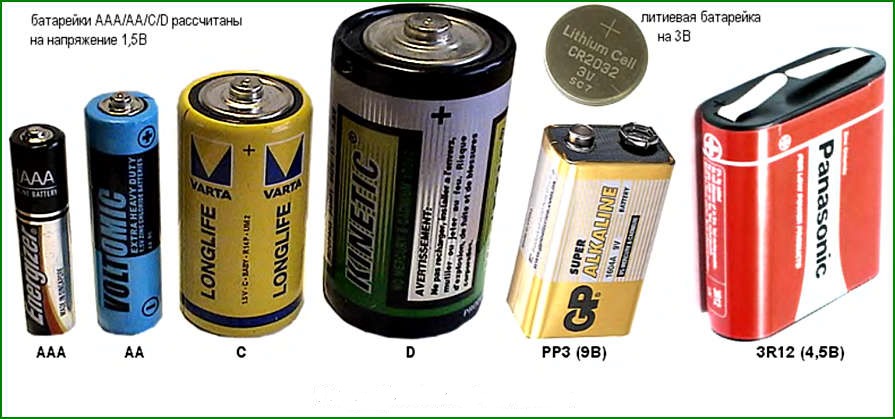
Chemical reaction
The least powerful of all are salt batteries. Their shelf life is short, no more than three years.
More powerful elements are alkaline. We are accustomed to their imported name - “alkaline”. They can be stored for up to five years.
The most powerful of all are lithium batteries. They remain operational for up to seven years.
How to determine which batteries can be charged
Only rechargeable batteries that have a special marking can be recharged repeatedly. Any other batteries, no matter what type they are, cannot be charged.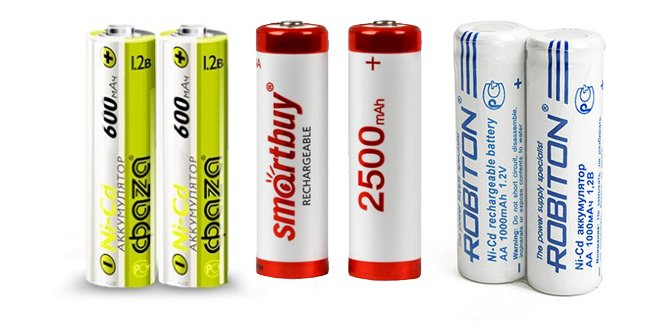
If safety rules are ignored, the following may happen:
- if you are lucky, nothing will happen;
- the battery may boil and fail;
- it may overheat, which could lead to a fire or explosion;
- may short out the electrical wiring.
Based on the materials used, batteries are divided into types:
- nickel metal hydride;
- nickel-cadmium;
- nickel-zinc;
- lithium-ion;
- lithium polymer.
Attention! Nickel-cadmium batteries have the ability to remember the amount of charge, which is why it is recommended to first discharge them to zero and then charge them to one hundred percent. Nickel-metal hydride also has this effect, but it is minimal for them.
The batteries are no different in size from other batteries. Therefore, it is difficult to distinguish them from ordinary ones. The only thing that is not among them is button cell batteries, except for a small series that is intended for use in hearing aids.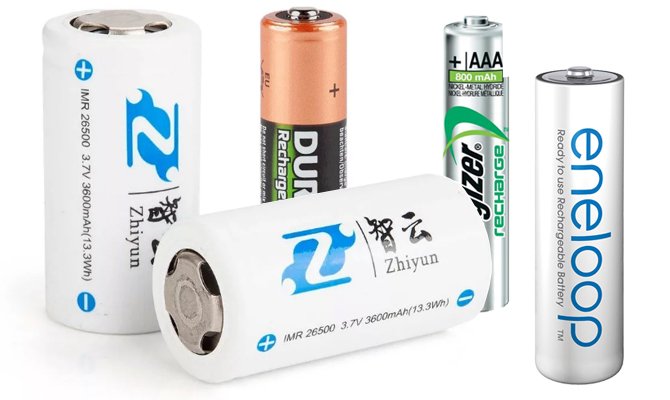
Why can't you charge a regular battery?
All kinds of button-type batteries cannot be recharged, and it is better not to try to recharge others. If you see the inscription alkaline on the battery, then you shouldn’t even try to charge it. 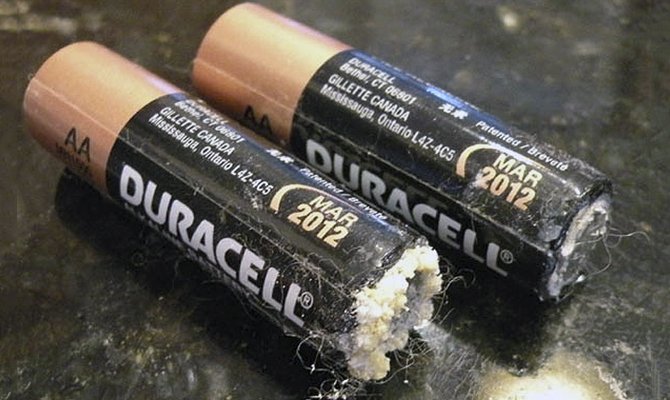
The design and principle of operation of batteries that are intended to be “used and thrown away” are different from rechargeable batteries. The electrolyte supplies the electrodes with ions. And gradually their number becomes less and less. Therefore the battery is discharged.
If you charge a regular battery, there will be no effect. It won't work again. For example, conventional manganese-zinc batteries have an electrode made of zinc. During operation, it gradually dissolves.
Rechargeable batteries are capable of returning the value of their electrolyte and electrodes to their original state during charging.In the charger and battery, oxygen and hydrogen ions appear inside the electrolyte. And the reduction process starts, hydrogen acts as a catalyst and converts the cathode into lead, and oxygen, in turn, forms lead dioxide from the anode.
How to properly charge a battery
Even something as simple as charging a battery requires compliance with certain safety measures:
- Before charging the battery, you need to carefully read what the manufacturer recommends in the instructions included with the device.
- Rechargeable batteries produced by modern industry do not have the ability to remember the charge level, so there is no need to completely discharge them in order to charge them later. The only exception is nickel-cadmium batteries.
- You need to use the charger at a certain temperature; if it is no more than five degrees and not lower than fifty, it is better to refrain from this.
- The charger must match the batteries. For them, it is not the charging speed that is important, but the quality. And the slower the charging goes, the better.
- Do not charge batteries for more than twenty-four hours. If during this time the charge has not been replenished, then you don’t have to try anymore.
During charging, the battery gets very hot, do not be afraid of this - this is a normal phenomenon. But at the same time, the surface of the battery should not be hot. If these are the sensations that arise when you touch them, stop charging.

